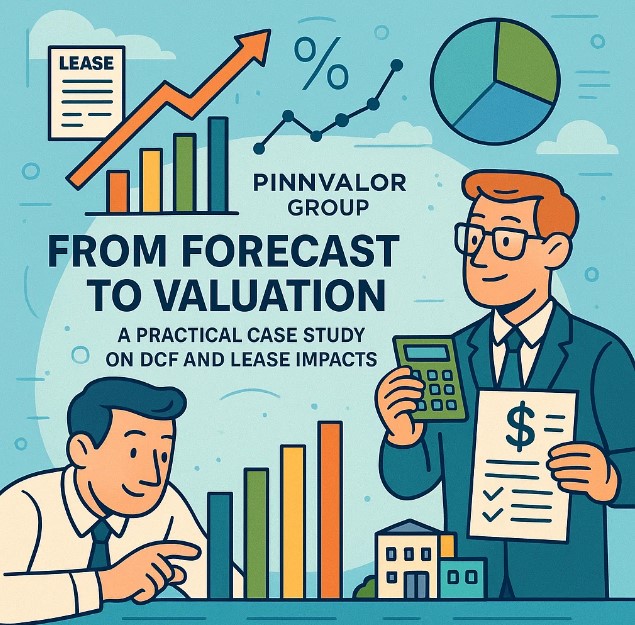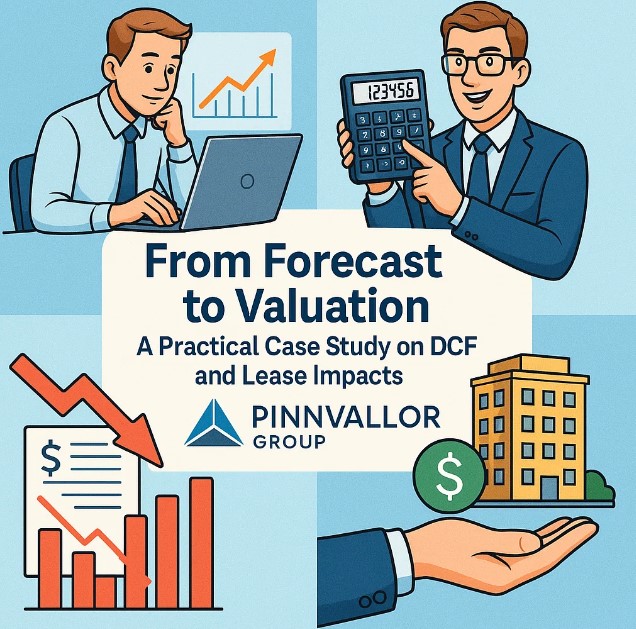
From Forecast to Valuation: A Practical Case Study on DCF and Lease Impacts
Introduction
In the realm of corporate finance, understanding the true value of a business is crucial for strategic decision-making, whether it's for mergers and acquisitions, capital budgeting, or investment analysis. Two powerful tools that often go hand-in-hand in valuation are Discounted Cash Flow (DCF) analysis and lease accounting. While DCF models forecast a company’s intrinsic value based on future cash flows, leases—especially under new accounting standards like IFRS 16 and ASC 842—can significantly impact those cash flows and, in turn, the valuation.
This blog explores a real-world-inspired case study that ties together forecasting, DCF valuation, and the impact of lease obligations on financial modeling.
Can a simple lease obligation reshape your entire business valuation?
A lease isn’t just a line item—it’s a financial commitment that can reshape your entire valuation. Overlooking it could mean overpaying or undervaluing by millions.
Section 1: Understanding the Basics
What is DCF Analysis?Discounted Cash Flow (DCF) is a valuation method that estimates the value of an investment based on its expected future cash flows, adjusted (or discounted) to reflect their present value using a required rate of return (discount rate).
- Forecasted Free Cash Flows (FCFs)
- Terminal Value
- Discount Rate (typically WACC)
Under modern lease accounting standards:
- Operating leases are now capitalized on the balance sheet.
- This results in the recognition of Right-of-Use (ROU) assets and Lease Liabilities.
- Lease payments affect both operating cash flow and financing cash flow in cash flow statements.
Section 2: The Case Study — ABC Retail Ltd.
- Industry: Retail
- Stores: 100 leased outlets
- Revenue (FY 2024): $150 million
- EBITDA Margin: 15%
- Annual Lease Payments: $10 million (average lease term: 8 years)
- WACC: 9%
- Growth Rate for FCFs: 5% for 5 years, 2% terminal growth
Section 3: Forecasting Cash Flows
We begin by projecting the Free Cash Flows to the Firm (FCFF) for five years. Here's a simplified snapshot:
| Year | Revenue ($M) | EBITDA ($M) | CapEx ($M) | Change in WC ($M) | Lease Payments ($M) | FCF ($M) |
|---|---|---|---|---|---|---|
| 2025 | 157.5 | 23.6 | 4.5 | 1.5 | 10 | 7.6 |
| 2026 | 165.4 | 24.8 | 4.7 | 1.6 | 10 | 8.5 |
| 2027 | 173.7 | 26.0 | 4.9 | 1.7 | 10 | 9.4 |
| 2028 | 182.4 | 27.4 | 5.1 | 1.8 | 10 | 10.5 |
| 2029 | 191.5 | 28.7 | 5.4 | 1.9 | 10 | 11.4 |
Section 4: Terminal Value Calculation
We assume a terminal growth rate of 2% and use the Gordon Growth Model:
TV = (FCF2029 × (1 + g)) / (WACC - g)
TV = (11.4 × 1.02) / (0.09 - 0.02) = 11.628 / 0.07 ≈ $166.1M
Section 5: Enterprise Value Computation
Now, discounting all cash flows and the terminal value to present value using the WACC (9%):
EV = Σ [FCFt / (1 + 0.09)t] + TV / (1 + 0.09)5
EV ≈ 7.0 + 7.2 + 7.3 + 7.4 + 7.4 + 107.8 = $144.1M

Section 6: Adjusting for Lease Liabilities
Under IFRS 16/ASC 842, lease liabilities are treated as debt-like obligations. Let’s assume the present value of lease obligations is estimated at $65 million.
Equity Value = EV - Net Debt - Lease Liabilities
Equity Value = 144.1M - 10M - 65M = $69.1M
Section 7: Key Insights from the Case
- Lease obligations significantly affect valuation: Without considering lease liabilities, the equity value would be overstated.
- Cash flow forecasting must reflect actual economic outflows: Lease payments reduce available free cash flows and must be accounted for accordingly.
- Lease capitalization increases financial transparency: By treating leases as debt, investors and analysts get a clearer picture of long-term obligations.
- WACC must consider lease-related risks: High lease commitments can increase financial risk and should be reflected in the discount rate.
Section 8: Final Thoughts
This case study underscores how essential it is to integrate both financial forecasting and lease accounting into your DCF model for accurate valuation. In the post-IFRS 16 world, leases are no longer just off-balance sheet commitments—they are fundamental components of enterprise risk and valuation.
Whether you're an analyst, CFO, or investor, incorporating lease impacts into your DCF not only enhances accuracy but also provides deeper insight into a company’s financial health and future performance.
Call to Action
Interested in learning how to build a full DCF model with lease adjustments in Excel? Stay tuned for our upcoming tutorial with downloadable templates.
